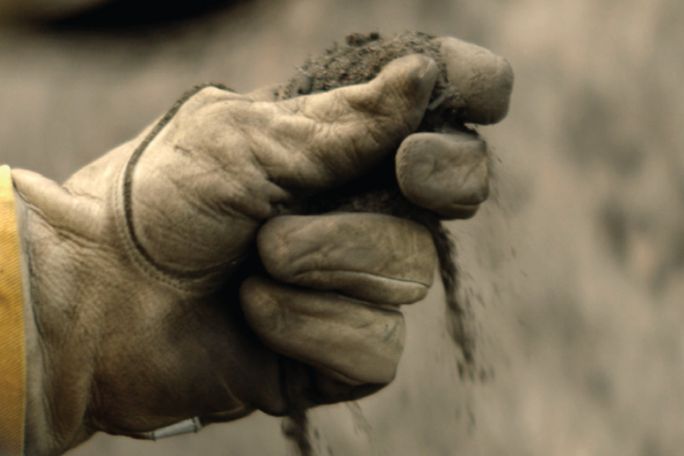Lesson summary
In this geography lesson students consider both the impacts of bushfires and strategies for responding to them. Students use clips from ‘A Fire Inside’ to deepen their understanding of the ways bushfires affect communities and the environment. Through the case study of the RFS, students consider existing strategies of prevention, mitigation and preparedness. They then work together to consider other approaches to bushfire response.
Learning intentions:
Students will...
- identify multiple impacts of bushfires
- predict the follow on consequences and immediate impacts of bushfires
- analyse an existing response to bushfires
- suggest their own responses to bushfires.
Success criteria:
Students can...
- connect to prior knowledge about bushfires to outline possible impacts
- use a case study to deepen theirunderstanding of a bushfire’s impacts
- analyse the case study of the RFS to understand prevention, mitigation and preparedness
Lesson guides and printables
Curriculum links
Select your curriculum from the options below.
Lesson details
Curriculum mapping
Australian curriculum content descriptions:
Years 7 Geography:
Reflect on their learning to propose individual and collective action in response to a contemporary geographical challenge, taking account of environmental, economic and social considerations, and predict the expected outcomes of their proposal (ACHGS054).
Years 8 Geography:
Causes, impacts and responses to a geomorphological hazard (ACHGK053)
Reflect on their learning to propose individual and collective action in response to a contemporary geographical challenge, taking account of environmental, economic and social considerations, and predict the expected outcomes of their proposal (ACHGS062).
Year 9 Geography:
Reflect on and evaluate findings of an inquiry to propose individual and collective action in response to a contemporary geographical challenge, taking account of environmental, economic, political and social considerations; and explain the predicted outcomes and consequences of their proposal (ACHGS071).
Year 10 Geography:
Human-induced environmental changes that challenge sustainability (ACHGK070)
Reflect on and evaluate findings of an inquiry to propose individual and collective action in response to a contemporary geographical challenge, taking account of environmental, economic, political and social considerations; and explain the predicted outcomes and consequences of their proposal (ACHGS080).
Syllabus outcomes: GE4-2,GE4-3,GE4-8
General capabilities: Critical and Creative Thinking, Ethical Understanding, Information and Communication Technology (ICT) Capability, Literacy, Personal and Social Capability.
Cross-curriculum priority: Sustainability
Relevant parts of Year 7 & 8 achievement standards: By the end of Year 8, students can explain interconnections within environments and between people and places and explain how they change places and environments. They compare alternative strategies to a geographical challenge, taking into account environmental, economic and social factors.
Relevant parts of Year 9 & 10 achievement standards: They present findings, arguments and explanations using relevant geographical terminology and digital representations in a range of appropriate communication forms. Students propose action in response to a geographical challenge, taking account of environmental, economic and social factors, and predict the outcomes and consequences of their proposal.
Resources required
- A device capable of presenting a video to the class
- Student Worksheets – one copy per student
Skills
This lesson is designed to build students’ competencies in the following skills:
- Communication
- Community engagement
- Cultural understanding
- Critical thinking
- Empathy
- Global citizenship
- Collaboration
- Problem solving
Additional info
Before teaching the lessons, ensure you have watched the feature documentary ‘A Fire Inside’, rated MA15+ and have gained approval from parents and guardians before viewing the documentary.
To view the film you can rent or purchase an online copy from Google Play, Apple TV, Prime Video, or Ritz at home.
Students may develop heightened emotions and discomfort during the film whilst learning about the psychological effects and impact the fires had on animals, people, families, communities, and the country. It is recommended that you direct students to a school counsellor if they require additional support and read through the Handling Sensitive Topics and Issues: Handling Sensitive Topics and Issues.
About the feature documentary - A Fire Inside:
When a volunteer firefighter drives his car to almost certain death, he does it during the worst fires in Australian history because he ‘has a job to do’. Three months later, the fires are out, but his fight is just beginning.
Turning a sensitive lens on the unprecedented devastation of Australia’s 2019/2020 ‘Black Summer’ bushfires; from a country-wide emergency to the astonishing stories of help that emerged, A Fire Inside presents an inspirational look at how people respond to crisis and the impact it has on the human spirit.


Welcome back!
Don't have an account yet?
Log in with:
Create your free Cool.org account.
Many of our resources are free, with an option to upgrade to Cool+ for premium content.
Already have an account?
Sign up with:
By signing up you accept Cool.org's Terms and Conditions(Opens in new tab) and Privacy Policy(Opens in new tab).